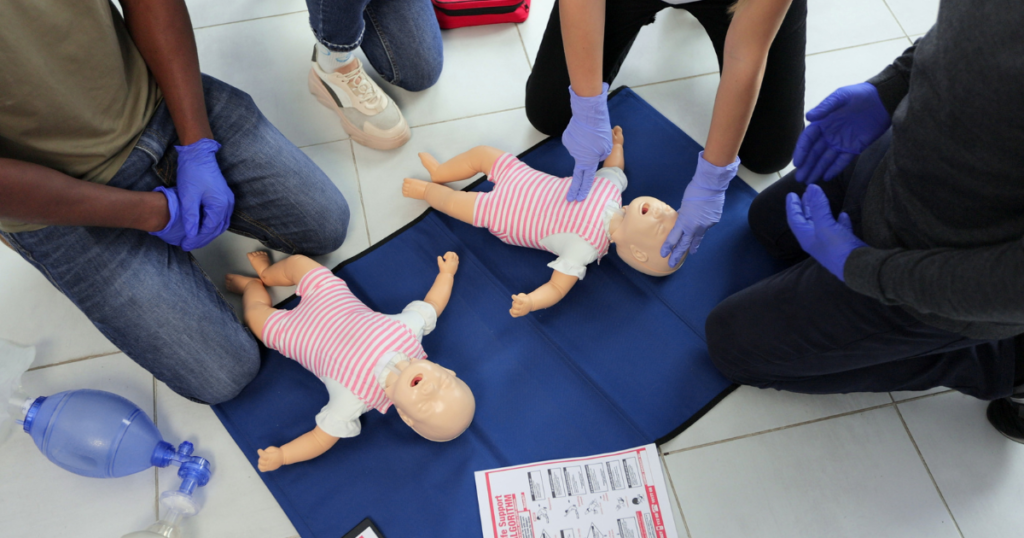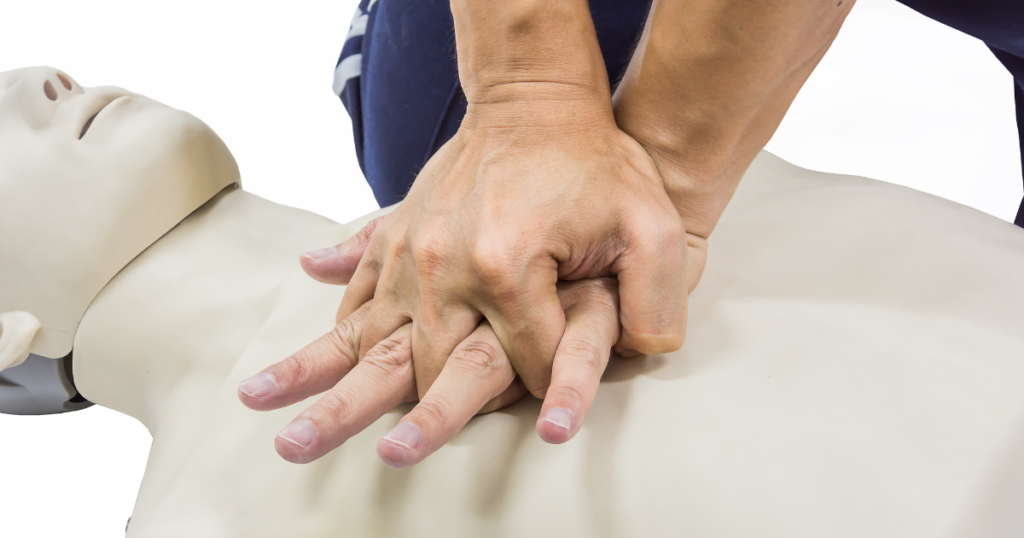Learn Proper Hand Placement During CPR
Importance of Effective CPR Hand Placement
Cardiac emergencies are among the foremost health crises worldwide, marking a pivotal concern for individuals and communities alike. These emergencies disrupt the heart’s rhythmic beating, halting blood flow and the essence of life. The suddenness of such events underscores the necessity for immediate, proficient intervention, notably through cardiopulmonary resuscitation (CPR). Central to mastering CPR training in New Jersey and any other state is the aspect often glossed over yet paramount: the precision of hand placement.
At the heart of CPR’s lifesaving power are high-quality chest compressions. These are not mere physical gestures but a bridge to life, pumping oxygen-rich blood to the brain and vital organs during the crucial moments of a cardiac emergency. The efficacy of these compressions lies in their ability to mimic the heart’s own pumping mechanism. This task demands strength and speed and, critically, accuracy in hand placement.

Proper Hand Placement: CPR for Adults, Children and Infants
Remember: Positioning is important. Stand or kneel beside the victim, placing the heel of one hand at the center of the chest, directly over the lower part of the breastbone. The other hand should stack atop the first, fingers interlocked and raised to avoid contact with the ribs.
Alignment and execution are also crucial. Ensure your shoulders align directly above your hands, arms extended and locked at the elbows. Engage your upper body to compress the chest at least two inches deep, maintaining a brisk pace of 100-120 compressions per minute. Allow the chest to rebound fully between compressions, avoiding any leaning to permit proper chest rise.
For children and infants:
Adjustments in technique reflect the patient’s size. If you’re resuscitating a child, use one or both hands as necessary to achieve the same compression depth, adapting to the child’s chest size. A gentler approach using two fingers or the two-thumb encircling method is warranted for infants, targeting a compression depth of approximately 1.5 inches.
The principle remains consistent across ages. Precision in hand placement and compression depth is vital to effective CPR, which must be adapted to the recipient’s physical needs.
How to Get CPR Training
Medserv Healthcare stands at the forefront of emergency response training, offering a comprehensive course suite that includes basic life support (BLS), CPR instructor development, and active violence emergency response training (AVERT). Our curriculum is designed not merely to impart knowledge but to instill confidence and competence. Through hands-on training, scenario-based simulations, and expert feedback, we empower individuals to learn and master the critical skills of CPR.
Beyond the basics, our advanced training delves into effective chest compressions’ anatomical and physiological underpinnings. We explore the common pitfalls in hand placement and technique, offering corrective strategies to enhance performance. Our courses are a deep dive into the mechanics of lifesaving, preparing our trainees to face real-world emergencies with assurance and expertise.

The Medserv Healthcare Difference
As health and safety experts, Medserv Healthcare is not just a certified HSI and AHA training provider. More importantly, we are your partners in emergency care preparedness. We understand the weight of responsibility that comes with the knowledge of CPR — it’s the power to save lives, to turn a moment of fear into one of hope. We invite you to join our mission of becoming part of a community dedicated to making a difference.
Whether you’re seeking to refine your skills, start your journey in lifesaving techniques, or aim to instruct others, Medserv offers the pathway. With our BLS and CPR Instructor Development courses, you’re not just learning procedures but embracing the role of a lifesaver.
Be CPR Ready
The ability to perform CPR with precision and confidence is a critical component of the chain of survival in cardiac emergencies. Proper hand placement is the foundation of effective chest compressions, a skill that requires both knowledge and practice to master. At Medserv Healthcare, we’re committed to providing that foundation, offering training that equips individuals with the skills to save lives.
We encourage you to become a certified CPR practitioner. In doing so, you join a noble cause — extending the hands of life to those in need. Contact us today to enroll in our training courses and step confidently into your role as a lifesaver.
